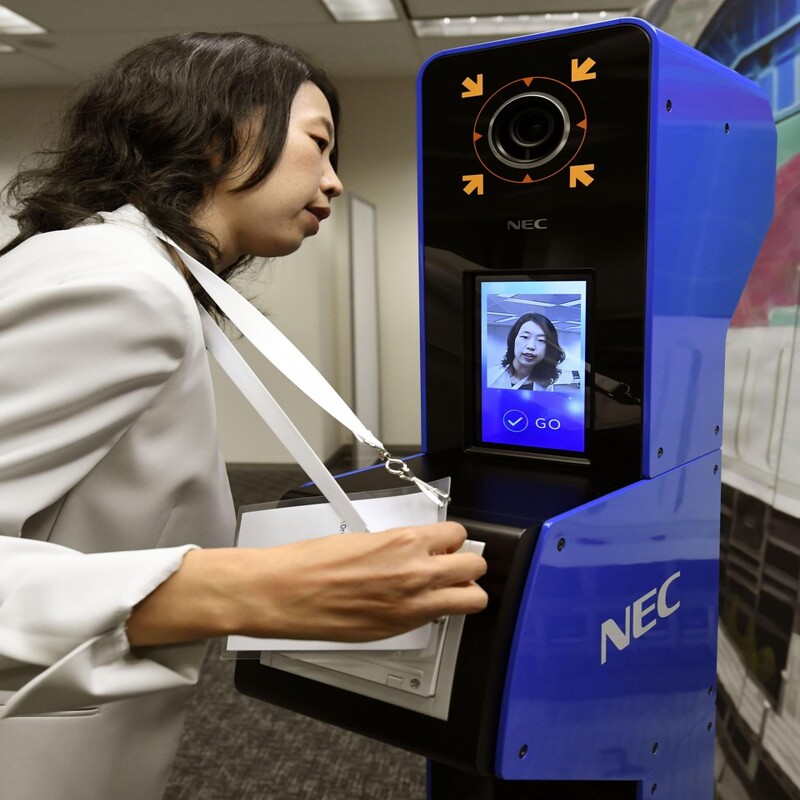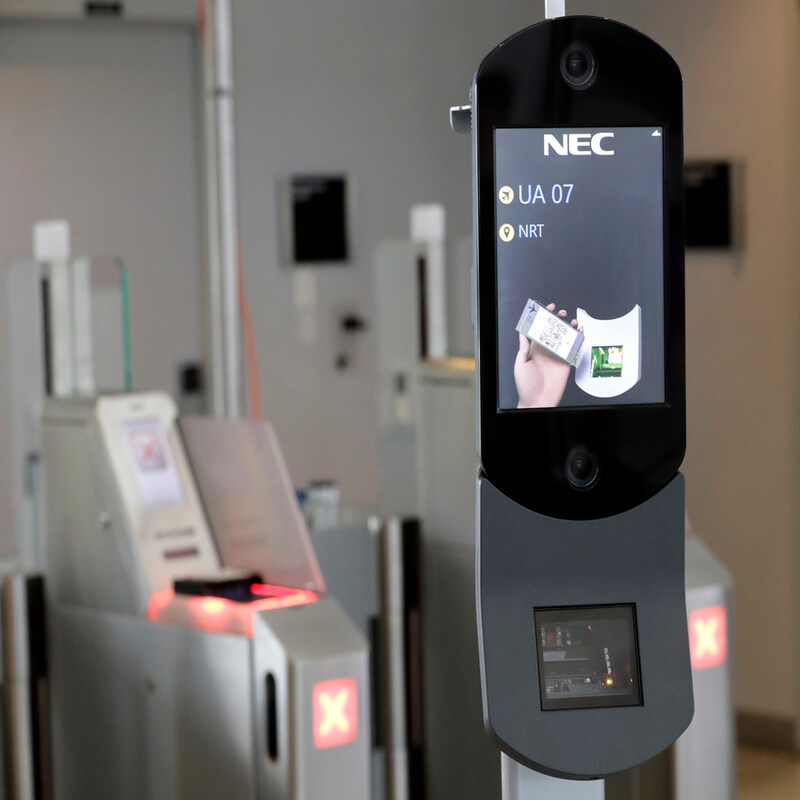Facial recognition technology has significantly transformed how we interact with security systems. Indeed, this innovation has permeated various sectors, including law enforcement, retail, and smart cities. NEC Corporation, a global leader in the information technology and telecommunications sector, has emerged as a key player in this field. The company’s facial recognition solutions are particularly noteworthy for their accuracy and effectiveness. As the world increasingly adopts advanced identification systems, NEC continues to refine its offerings, ensuring they meet evolving security needs. This article delves into NEC’s facial recognition technology, its applications, benefits, and potential concerns.
Understanding the Technology Behind NEC’s Facial Recognition
Facial recognition technology primarily employs algorithms to identify and verify individuals based on their facial features. NEC’s systems utilize advanced deep learning techniques to analyze images and extract unique facial characteristics. These algorithms are designed to learn from vast datasets, improving their accuracy over time. Consequently, this capability enables NEC to maintain high recognition rates, even in challenging conditions. Furthermore, these systems can process multiple images simultaneously, making them particularly effective in crowded environments.
Deep Learning: The Backbone of Facial Recognition
Deep learning is a subset of artificial intelligence that mimics human decision-making. By leveraging neural networks, deep learning algorithms analyze complex patterns in data. In NEC’s facial recognition system, these algorithms evaluate thousands of facial features instantaneously. The outcome is a highly accurate identification process, even in diverse lighting conditions. This technology not only detects faces but also captures subtle distinctions in facial expressions and angles.
Moreover, deep learning algorithms become more effective as they process larger datasets. Consequently, NEC continually trains its systems with diverse images. This ongoing training enhances the software’s ability to recognize faces under various conditions. As a result, NEC’s technology can adapt quickly to real-world scenarios. This adaptability makes NEC’s solutions ideal for crucial applications in security and surveillance.
Real-World Applications of NEC’s Technology
NEC’s facial recognition technology boasts a wide array of applications across different sectors. In law enforcement, it dramatically enhances investigative procedures. For example, police departments use these systems to identify suspects swiftly. Moreover, they can combine facial recognition with video surveillance for more effective monitoring. Furthermore, this technology has been integrated into the security measures of airports and other critical infrastructures.
In the retail sector, facial recognition technology can help businesses optimize customer experience. Stores employ these systems to analyze customer demographics and behavior patterns. As consumers enter a store, their faces are scanned and matched against stored profiles. This information allows retailers to tailor marketing strategies, improving sales efficiency. Consequently, businesses can create personalized shopping experiences that attract and retain customers.
The Benefits of NEC’s Facial Recognition Technology
The benefits of NEC’s facial recognition systems are numerous and impactful. From enhanced security to improved customer interactions, these technologies provide significant advantages. First and foremost, they contribute to public safety. By accurately identifying potential threats, organizations can respond more effectively. In law enforcement, this capability can lead to solving crimes more efficiently. Ultimately, public safety is enhanced when law enforcement agencies can quickly identify suspects.
Additionally, organizations can streamline their operations with this technology. For instance, event organizers use facial recognition for seamless check-in services. Attendees can be verified quickly, reducing wait times and improving crowd management. This efficiency can lead to better event experiences and higher satisfaction levels. Moreover, businesses can effectively allocate resources based on real-time data and analysis.
Ethical Considerations Surrounding Facial Recognition
Despite its advantages, facial recognition raises ethical and privacy concerns. Critics argue that the technology can lead to unwanted surveillance. When used improperly, it can infringe on civil liberties and personal freedoms. Additionally, concerns arise regarding the accuracy of facial recognition systems. Misidentification can lead to wrongful arrests and significant legal consequences. Therefore, it becomes essential to address these risks.
To mitigate these concerns, NEC emphasizes ethical practices in the deployment of its technology. The company actively promotes transparency and accountability in its facial recognition systems. This proactive approach helps build public trust and ensures responsible usage. Furthermore, NEC strives to comply with evolving regulations related to facial recognition technologies. By implementing privacy-focused measures, they are committed to safeguarding individual rights. Ultimately, balancing innovation with ethical considerations is crucial for the sustainable growth of facial recognition technology.
Addressing Bias and Enhancing Accuracy
Another significant concern with facial recognition technology pertains to bias. Studies have shown varying accuracy levels across different demographic groups. High false positive rates for certain races or genders can lead to systemic issues. NEC acknowledges this challenge and actively works to address bias within its systems. Continuous algorithm improvements and diversified datasets help decrease bias risks.
In efforts to enhance accuracy, NEC invests heavily in research and development. This commitment ensures that the technology remains competitive in a fast-evolving market. The company collaborates with academic institutions and industry experts to refine its algorithms. By continually enhancing system performance, NEC strives to maintain a competitive edge while advancing fairness. Such initiatives reflect NEC’s dedication to creating equitable facial recognition solutions for all demographics.
The Ethics of Facial Recognition Technology
As facial recognition technology evolves, ethical considerations become increasingly vital. Organizations must weigh the benefits against potential risks. Striking the right balance is essential to maintain public trust over time.
Privacy Issues
Privacy remains one of the most significant concerns linked to facial recognition. With the potential for misuse, ethical considerations must be paramount. Organizations must engage in transparency regarding their facial recognition systems. Informing the public about data collection practices fosters greater trust.
Moreover, individuals should have a say in how their data is used. This involves implementing consent protocols where applicable. Organizations that prioritize ethical frameworks foster goodwill within the community. This commitment to privacy can lead to enhanced public support and acceptance.
Regulations and Compliance
With rising public concern, regulations surrounding facial recognition technology are evolving. Governments are stepping up to define clear standards. Compliance with regulations ensures responsible utilization of such technologies. Therefore, businesses must remain vigilant in understanding and adhering to these regulations.
Moreover, regulatory compliance fosters accountability. Organizations that are committed to high ethical standards can build stronger reputations. Ultimately, technology that respects privacy and follows laws enjoys wider public acceptance.
Challenges Facing NEC’s Facial Recognition Technology
Although NEC’s facial recognition technology has many benefits, it faces challenges. These challenges can impact its development and integration into everyday applications. By understanding these issues, NEC can work toward continual improvement.
Public Perception
One significant challenge is public skepticism regarding facial recognition technology. Many individuals harbor fears about privacy breaches. Therefore, organizations must address these concerns proactively. By engaging with communities, businesses can help mitigate fears related to surveillance.
Moreover, public education plays a crucial role. Organizations should share information about how their systems work. Fostering understanding creates a more accepting environment for the technology.
Technological Limitations
Another challenge is the technology’s ability to recognize diverse features. Facial recognition systems sometimes struggle with various skin tones and facial structures. Consequently, this limitation can result in biases, especially in law enforcement applications.
To overcome these challenges, NEC must invest in improving algorithms continuously. By focusing on inclusivity, the technology can become more accurate. An inclusive approach will foster trust and reliability in facial recognition systems over time.
Future Trends in NEC’s Facial Recognition Technology
As facial recognition technology evolves, future trends are emerging that will shape its applications. NEC is determined to stay ahead of these innovations. One of the key trends is the integration of artificial intelligence. AI capabilities will enhance the existing technologies’ performance. These advancements will enable quicker processing times and improved recognition rates.
Moreover, the growth of IoT (Internet of Things) devices presents exciting opportunities. NEC plans to collaborate with IoT ecosystems to expand its facial recognition capabilities. This integration allows for more comprehensive monitoring and advanced data analytics. Furthermore, real-time facial recognition becomes more feasible as devices become interconnected. The result is a more seamless and efficient experience across various applications.
Behavioral and Emotion Recognition Integration
Another intriguing future trend is the potential integration of behavioral and emotion recognition. This development could revolutionize how businesses interact with customers. Imagine systems capable of assessing a person’s emotional state based on facial expressions. Such technology can drastically improve customer relationship management. For example, businesses can tailor responses according to a customer’s current mood.
In a public safety context, emotion recognition can aid in identifying distressing situations. By detecting anxiety or fear in crowds, rapid intervention can occur. NEC’s ongoing research aims to explore the implications of this technology. This integration signifies a promising avenue for the future of facial recognition systems.
Enhanced Security Measures with Cryptography
As facial recognition technology expands, security measures need to evolve concurrently. NEC recognizes the significance of protecting user data. Consequently, it is focusing on cryptographic methods to secure facial data. These methods will help maintain user privacy while maximizing system efficiency.
Encryption techniques will help safeguard sensitive information from unauthorized access. Furthermore, NEC aims to comply with global standards for data protection. By prioritizing data security, NEC bolsters customer confidence in its systems. This dedication to safety ensures the continued acceptance and adoption of facial recognition technology.
Conclusion: The Future of NEC’s Facial Recognition Technology
NEC Corporation stands as a leader in the burgeoning field of facial recognition technology. Through its commitment to research and development, it consistently enhances accuracy and effectiveness. While the benefits of this technology are substantial, ethical concerns warrant careful consideration. By focusing on transparency and bias reduction, NEC is committed to responsible usage.
As the future unfolds, NEC is poised to be at the forefront of innovations in facial recognition. Ongoing advancements in artificial intelligence, emotion recognition, and enhanced security will shape its applications. Indeed, the journey of NEC’s facial recognition technology is just beginning. As both public and private sectors adopt these systems, a careful, balanced approach will be crucial. Ultimately, the goal is to create a safer, more efficient world through ethical and effective facial recognition solutions.





